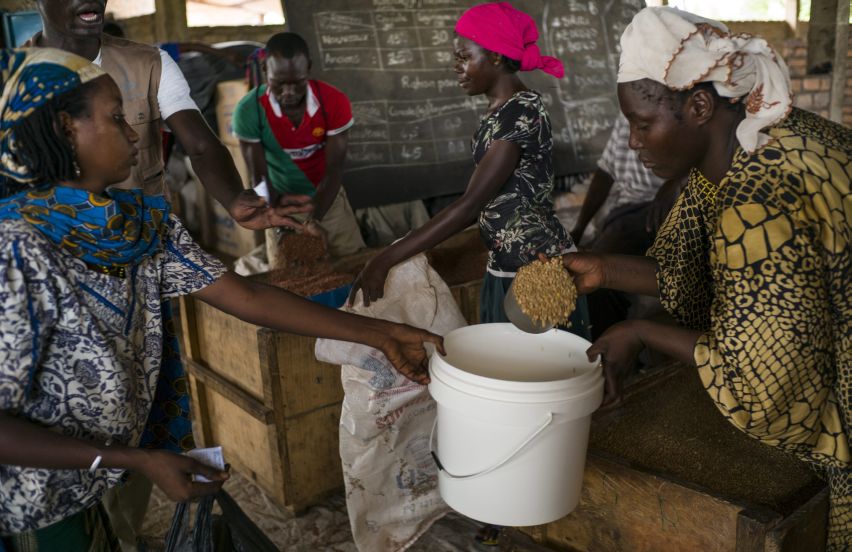Beyond the Day: How businesses are working to end child labor

Photo by UNHCR / C. Fohlen.
Today, 168 million children — some as young as 5 — are child laborers. Likely, the number is even higher as child labor is challenging to track. At least 85 million of these children work in very hazardous conditions, including forced labor, domestic slavery, sex trafficking, and bonded labor. Separated from their families, they’re often subjected to dangerous substances and are at a high risk of mistreatment, violence, and physical and psychological abuse.
This year, the World Day Against Child Labour theme — “No to child labour — Yes to quality education!” — calls on civil society and private sector leaders, to help eliminate child labor by contributing to global education. Fifty-eight million children are out of school globally, 20 million of which live in conflict and emergency settings such as the 3 million Syrian refugee children currently absent from the classroom. In conflict and emergencies, assets, transportation, and well paying jobs can be destroyed, exacerbating poverty and making child labour a more likely survival strategy for families.
The worst forms of child labor are greatly amplified by the even more narrow survival opportunities in conflict and emergency situations. Consider that the countries with the highest population of child laborers — Nigeria, Pakistan and Afghanistan — are also home to enduring conflicts and the highest out-of-school populations. Scant social protection and lack of vigilance — particularly in terms of records of school attendance through the minimum age of employment — only perpetuate this vicious cycle of exploitation, illiteracy, and poverty.
Children who work either drop out of school or never step foot inside a classroom at all. If they happen to live in one of the 46 countries that fail to provide children under the age of 18 legal protections from hazardous work, then they’re more likely resigning themselves to a life of low wages that may force them to raise their own children in poverty. Education is a proven strategy for protecting youth vulnerable to child labor: By giving every child access to free education by 2015 as committed by the UN Millennium Development Goal 2 set out to do by the end of 2015, children can break the cycle of poverty that leads to child labour.
Companies Can Play a Role in Halting the Cycle
It’s the responsibility of all actors to protect the rights and safety from exploitation of children. UNICEF, the UN Global Compact, and Save the Children generated a set of 10 Principles, the Children’s Rights and Business Principles, to guide companies on the full range of actions they can take in the workplace, marketplace, and community to respect and support children’s rights. To help demonstrate how companies can do so, the three partners also developed a compilation of 50 anonymous company examples of good practice. These practices serve to guide companies on actions they can take to reinforce the rights of children, the frequently overlooked stakeholders of business. In addition to developing their own human rights policies, companies can sign onto the UN Global Compact and join the wave of 8,000 corporations representing 145 companies to pledge to voluntarily align their operations with human rights principles.
Companies can reinforce these principles on their own by vetting their supply chains and holding their suppliers accountable for employing a legally eligible workforce. By placing human rights above all else, a company can simplify their code of conduct by eliminating vague jargon and making the pledge to treat their colleagues, business partners, and communities with dignity and respect.
To reinforce such a policy, companies can engage all employees in their corporate code of conduct dialogue, whether by requiring that they take an internal module or by hosting training specific to the communities in which they work. GBC-Education member Hess, for example, hosts mandatory training programs for all of their employees. This way, they can reinforce their robust Human Rights Policy by translating their principles into their work culture and requiring their employees and contractors to reflect these values. Hess also endorses and participates in initiatives such as the UN Global Compact, the Voluntary Principles on Security and Human Rights, and the Extractive Industries Transparency Initiative. Their policy also includes specific language related to prohibiting child labor.
Companies that pay fair wages, respect human rights, and support educational opportunity prevent child labor and over the long-term can strengthen communities and economies. As Kailash Satyarthi, anti-child labor activist and co-founder of the Global Campaign for Education, said in his Nobel Peace Prize acceptance speech in December: “There is no greater violence than to deny the dreams of our children.” This World Day Against Child Labor should stand as a reminder that child labor will not resolve itself, it will require the vigilance and commitment of everyone.
To learn more about how companies can join the conversation, check out the video by UNICEF, Save the Children, and the Global Compact below.
